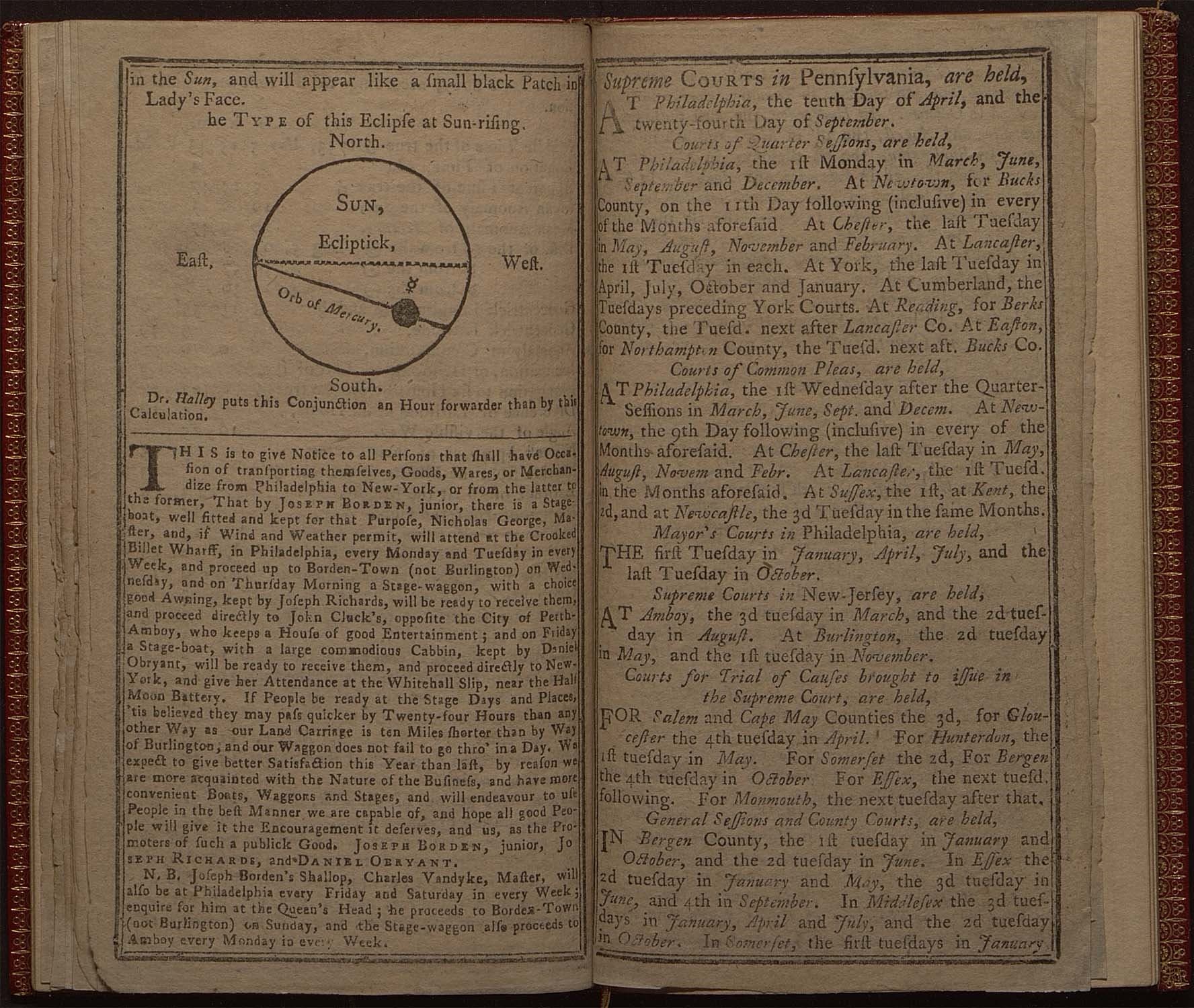Promoting Useful Knowledge: The American Philosophical Society and Science in Early America
Benjamin Franklin founded the American Philosophical Society (APS) in 1743 for the purpose of "promoting useful knowledge." But what was useful knowledge, and how was it shared and promoted?
This exhibition, inspired by the generous loan of Poor Richard's Almanack from APS, uses seven early American scientific texts to suggest an answer to those questions. Useful knowledge, including weather data, calendars, and astronomical tables, filled the pages of popular almanacs in 18th century America. It also appeared in longer studies exploring early concepts of conservation or applying geometry and mathematics to artillery, of interest to APS members like George Washington. Other APS members were responsible for creating and sharing useful knowledge in publications of their own, including the works of Thomas Jefferson and William Bartram, which are included in this exhibition.
A special thank-you to the APS for agreeing to a library-focused Super Bowl wager and the Kansas City Chiefs, whose victory allowed us to feature Poor Richard's Almanack in this examination of useful knowledge in early America.
Curated by Benjamin Gross, Antoinette Bettasso, and Jason W. Dean.
Poor Richard's Almanack
Philadelphia, 1752
Loan, American Philosophical Society

Poor Richard’s Almanack. Philadelphia, 1752. Loan, American Philosophical Society.
Benjamin Franklin was a man of prodigious and varied work. Founder of both the American Philosophical Society and the Library Company of Philadelphia, he was also a notable natural philosopher in the American colonies and early republic. Franklin's regular occupation was as a printer, and the most popular product of his press was Poor Richard's Almanack, which outsold all other printed books in America, other than the Bible. Franklin was directly involved in the production of the Almanack from 1733-1757. Each issue included monthly tables filled with data on weather, sunsets, sunrises, and other notable astronomical and astrological events.
The woodcut shown here is an illustration of the anticipated transit of Mercury on May 6, 1753. Based on his wide correspondence, he was well aware of this transit, and likely chose to include it in the Almanack to call attention to the more significant transit of Venus in 1761. The transit of Venus assisted astronomers in calculating solar parallax, which in turn allowed them to calculate the distance of Earth from the sun.
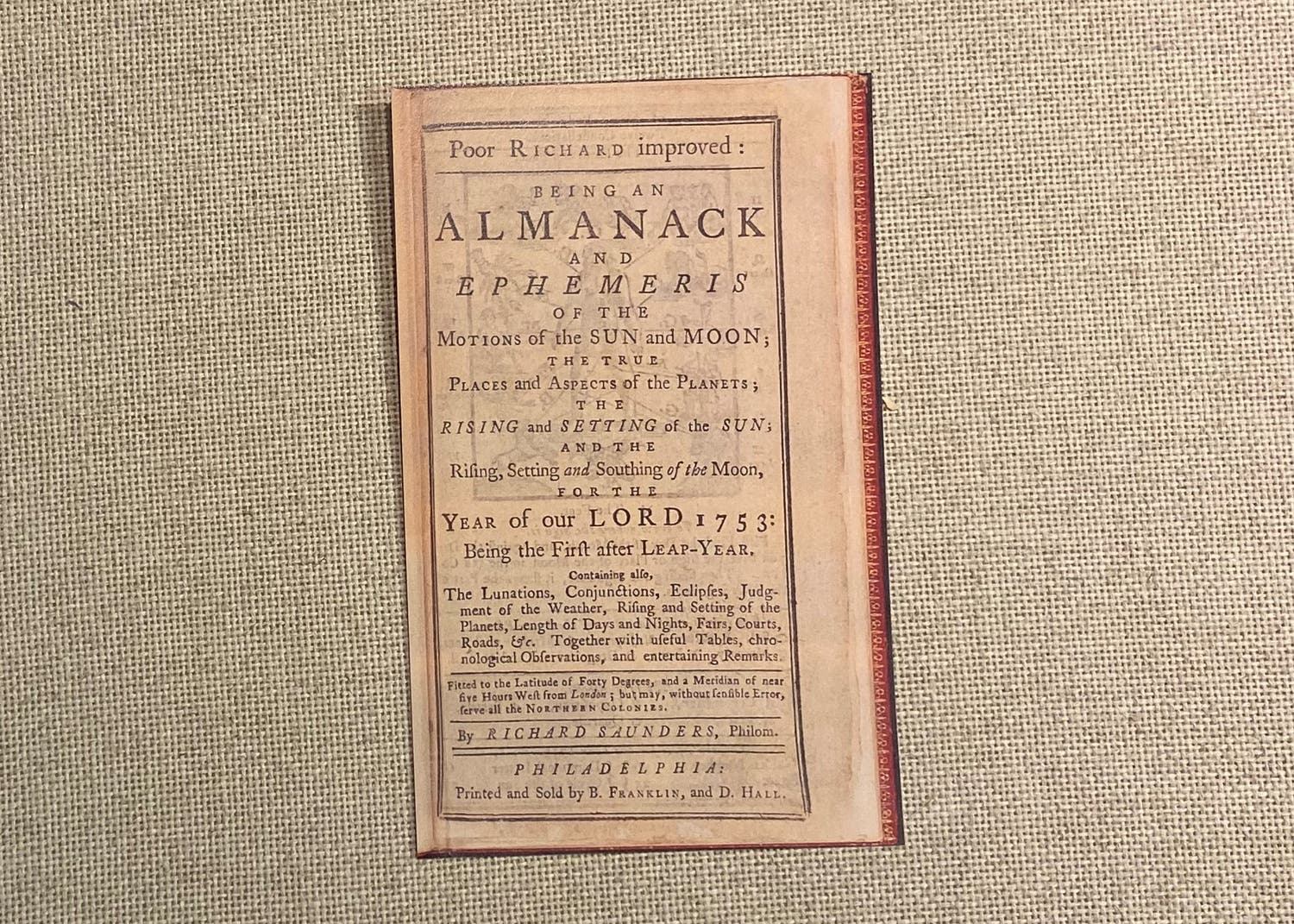
Front plate reproduction. Poor Richard’s Almanack. Philadelphia, 1752.
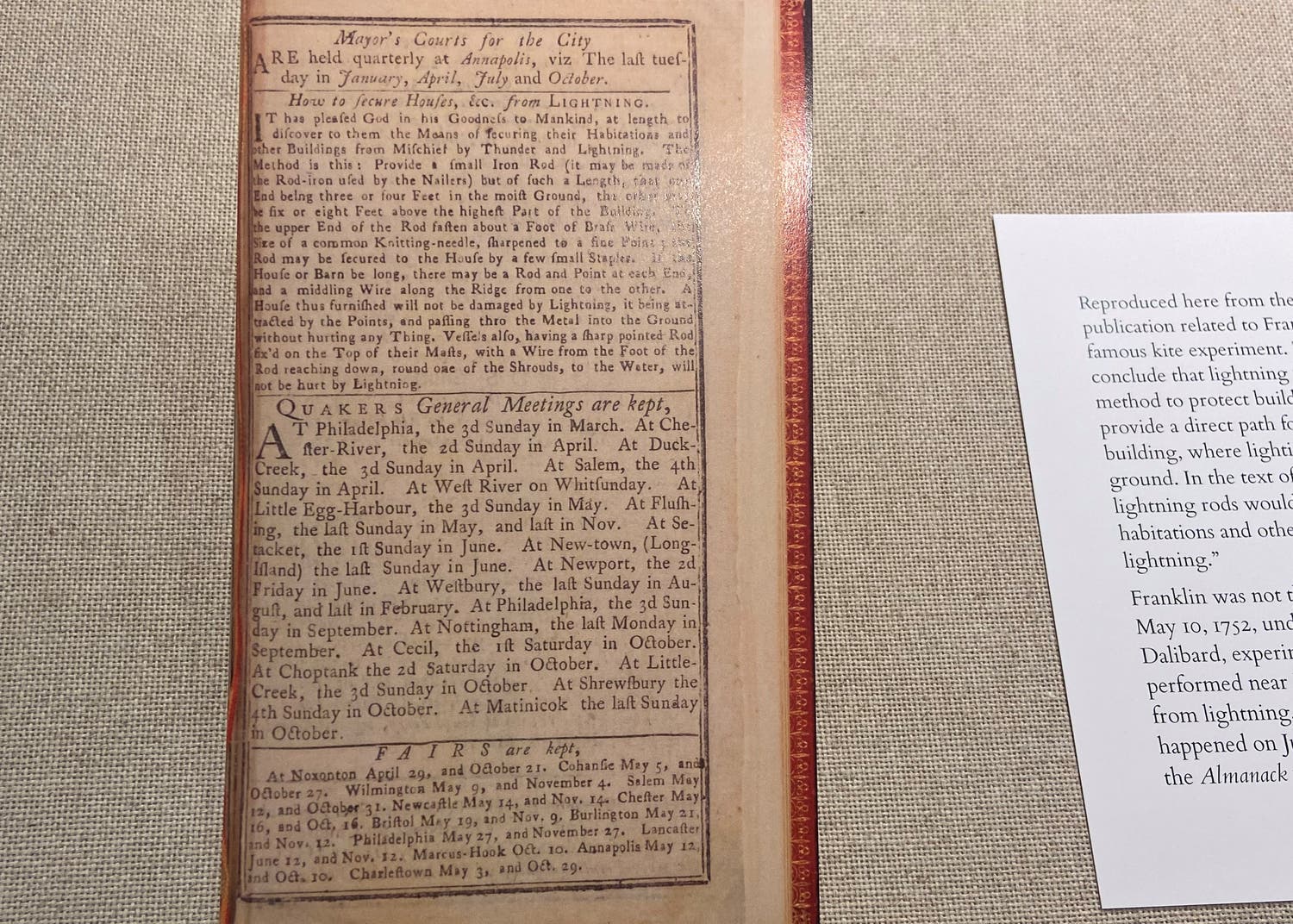
Reproduction. Poor Richard’s Almanack. Philadelphia, 1752.
Reproduced here from the 1753 Almanack is the first publication related to Franklin's lightning rod, a result of his famous kite experiment. That experiment led him to conclude that lightning was electricity, and thus the best method to protect buildings from lightning strikes was to provide a direct path for electricity to flow from the tip of a building, where lightning was most likely to strike – to the ground. In the text of the advertisement, Franklin states that lightning rods would assist people in "securing their habitations and other buildings from mischief by thunder and lightning."
Franklin was not the first to experiment with lightning. On May 10, 1752, under instructions from Thomas-François Dalibard, experiments with an iron rod and lightning were performed near Paris, which succeeded in drawing sparks from lightning. Franklin's famous kite experiment likely happened on June 17th of 1752, the same year that this issue of the Almanack was produced.
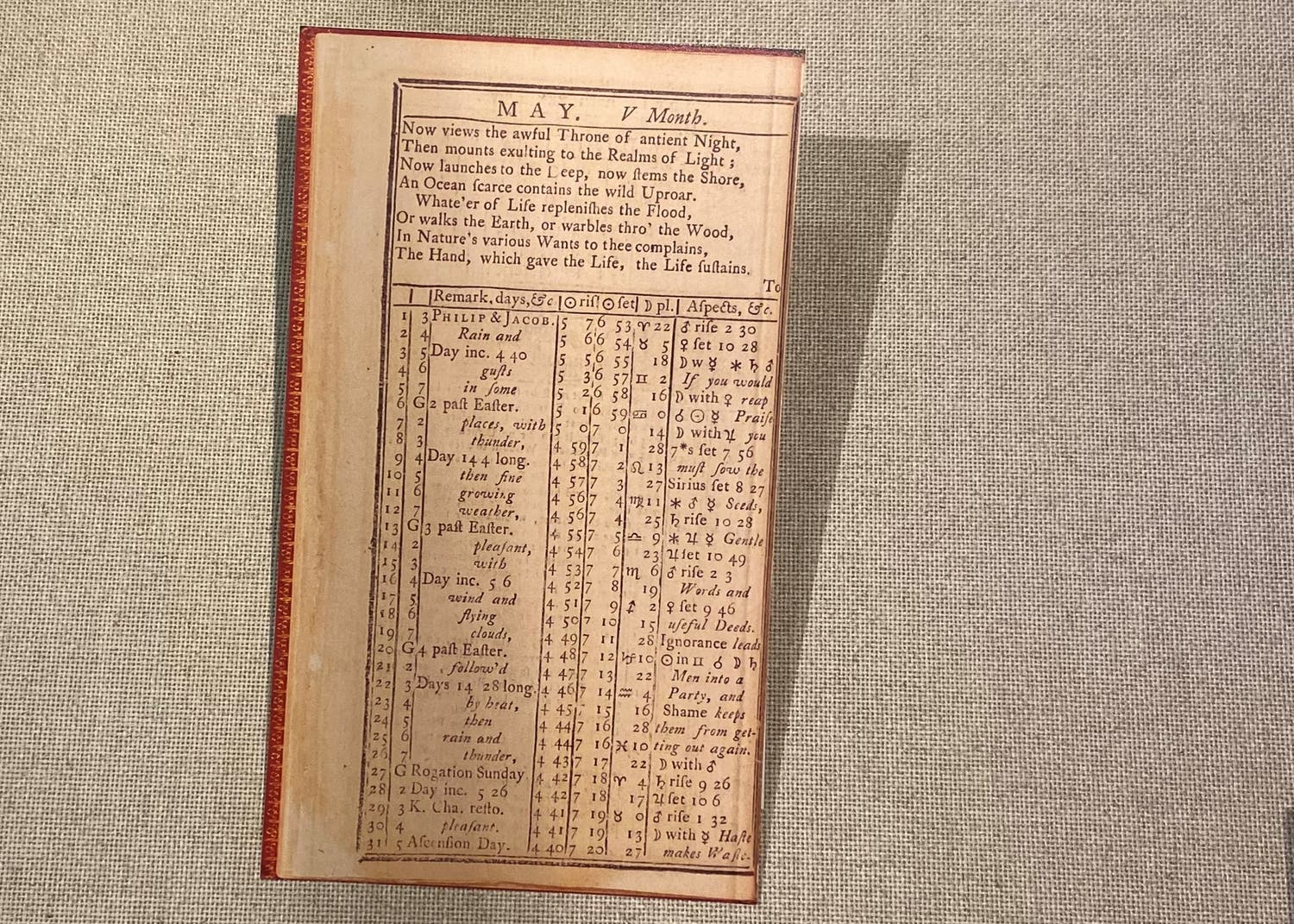
Reproduction. Poor Richard’s Almanack. Philadelphia, 1752.
Another remarkable feature of this issue of the Almanack is that it contains the first appearance of the now-famous aphorism haste makes waste, as you can see in the reproduction in the right column for May 30. Though popularly credited with creating these aphorisms, Franklin sourced and adapted them from 18th century books of sayings, aphorisms, and proverbs, editing them for clarity and length.
The aphorisms themselves are interspersed among astrological and astronomical events in the "Aſpects &c" column. Events in the sky recorded in this column include the rising and setting of stars and zodiacal signs, as well as celestial conjunctions. To the left is noted the times of sunrise (riſ) and sunset (ſet), as well as the location of the moon, all important to agriculture in the American colonies. The remarks on the days of the month indicating feast days and religious observances, are reminiscent of calendars from the middle ages, an important catalyst for astronomy in that era.
Thomas Jefferson
Notes on the State of Virginia
Philadelphia, 1794
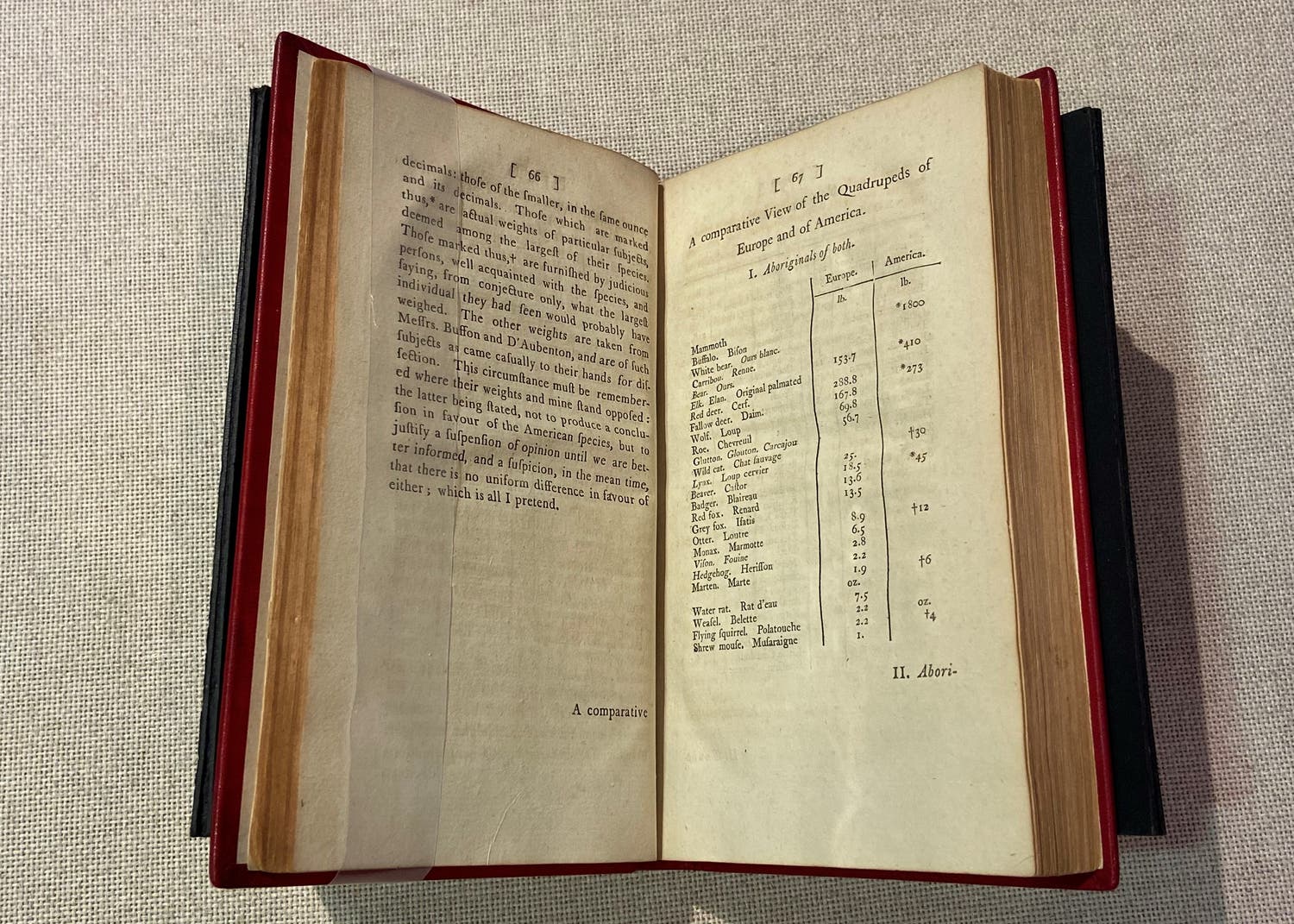
Thomas Jefferson, Notes on the State of Virginia. Philadelphia, 1794.
Thomas Jefferson was elected to the American Philosophical Society in 1780 and remained an active member until his death in 1826. He harbored a lifelong interest in natural history, which left him well-prepared to respond to a request for information about his home state from a French diplomat.
The resulting book, originally published in 1785, provided a systematic overview of the plants, animals, and minerals one might encounter in the Virginia countryside. It also included comparative tables like these to refute Georges-Louis Leclerc, Comte du Buffon, a French naturalist who believed American animals were intrinsically smaller and weaker than their European counterparts.
William Bartram
Travels Through North and South Carolina
London, 1792
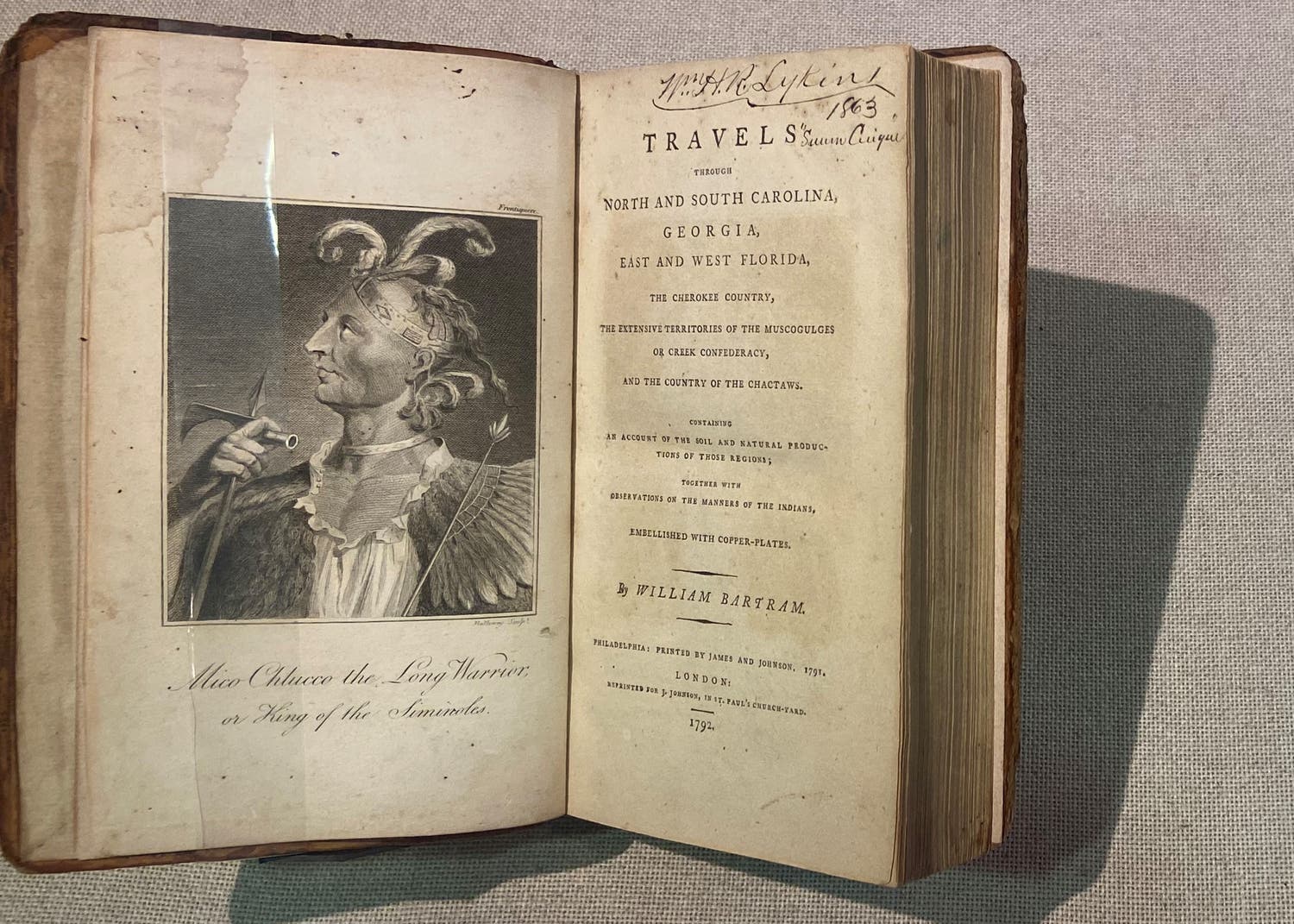
William Bartram, Travels Through North and South Carolina. London, 1792.
William Bartram came from a scientific family. His father, John, established one of America's first botanical gardens outside of Philadelphia and was a founding member of the American Philosophical Society.
William regularly accompanied his father on collecting trips and eventually decided to embark on an expedition of his own. Between 1773 and 1777, he wandered across the American southeast, taking notes and sketching hundred of new plants and animals along the way. These observations formed the basis of this travelogue, which garnered attention for its evocative descriptions of the natural world and sympathetic portrayal of indigenous people.
Charles Varlo
A New System of Husbandry
Philadelphia, 1785
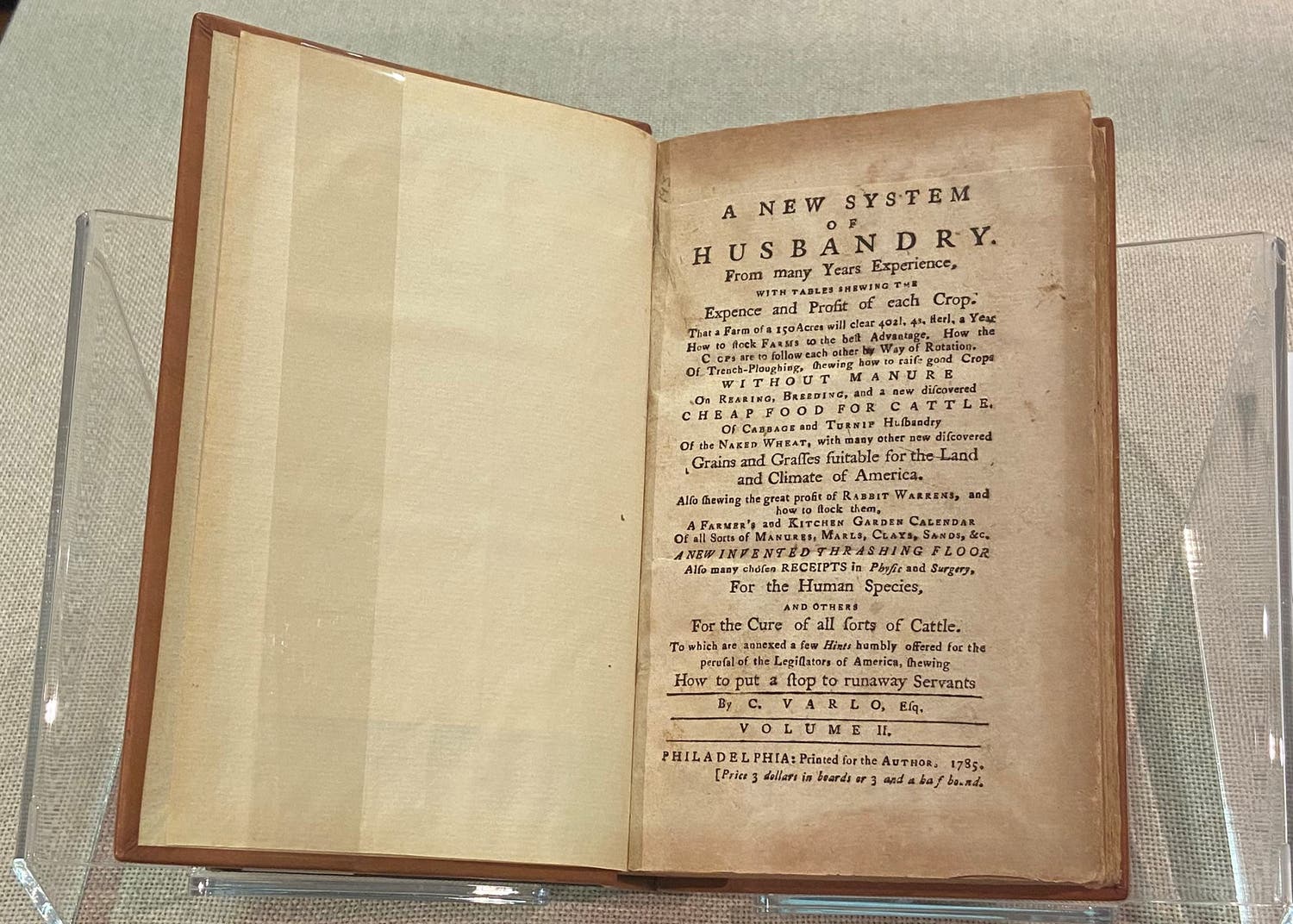
Charles Varlo, A New System of Husbandry. Philadelphia, 1785.
Varlo's book was wildly popular in the United States, as it discussed at length best practices for agriculture, farming, housekeeping, all useful knowledge. The list of subscribers in the second volume is a testament to the book's popularity, and included prominent names such as Gouverneur Morris, John Jay, David Rittenhouse, Richard Henry Lee, and George Washington.
The Library's copy is from Washington's library, both volumes with his bookplate affixed to the front pastedowns. Further evidence of Washington's ownership is on the title page of volume 1 - the top right corner is missing, as this was where Washington added his ownership inscription, as he did in many of his bother books. This is likely the work of an autograph hunter before the Library acquired the book.
John Muller
A Treatise of Artillery
Philadelphia, 1779
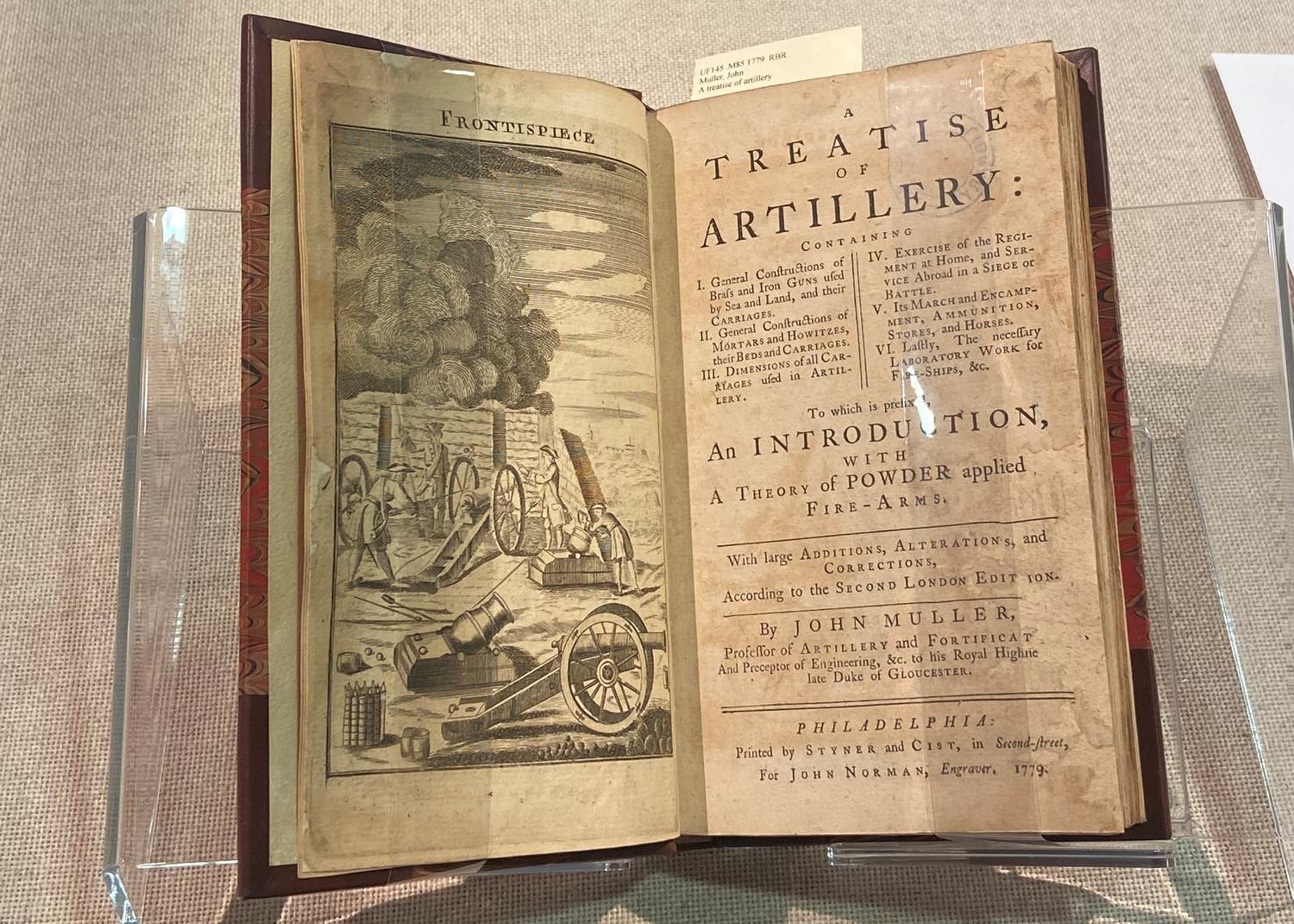
John Muller, A Treatise of Artillery. Philadelphia, 1779.
First published during the Seven Year's War, this book was one of the most influential English texts on artillery. Muller's focus on an idealized standard for creating and maintaining artillery equipment in the field influenced many of the American Revolution's generals, including APS members George Washington and Henry Knox. The mathematical and geometrical concepts applied within were useful knowledge – especially those charged with the prosecution of the American revolution.
The 1779 reprint of A Treatise of Artillery was the first artillery text printed in the new United States, and featured a dedication to George Washington, then still Commander in Chief of the Continental Army.
Ames' Almanack
Boston, 1759
Gift of Gustave and Elinor Eisemann
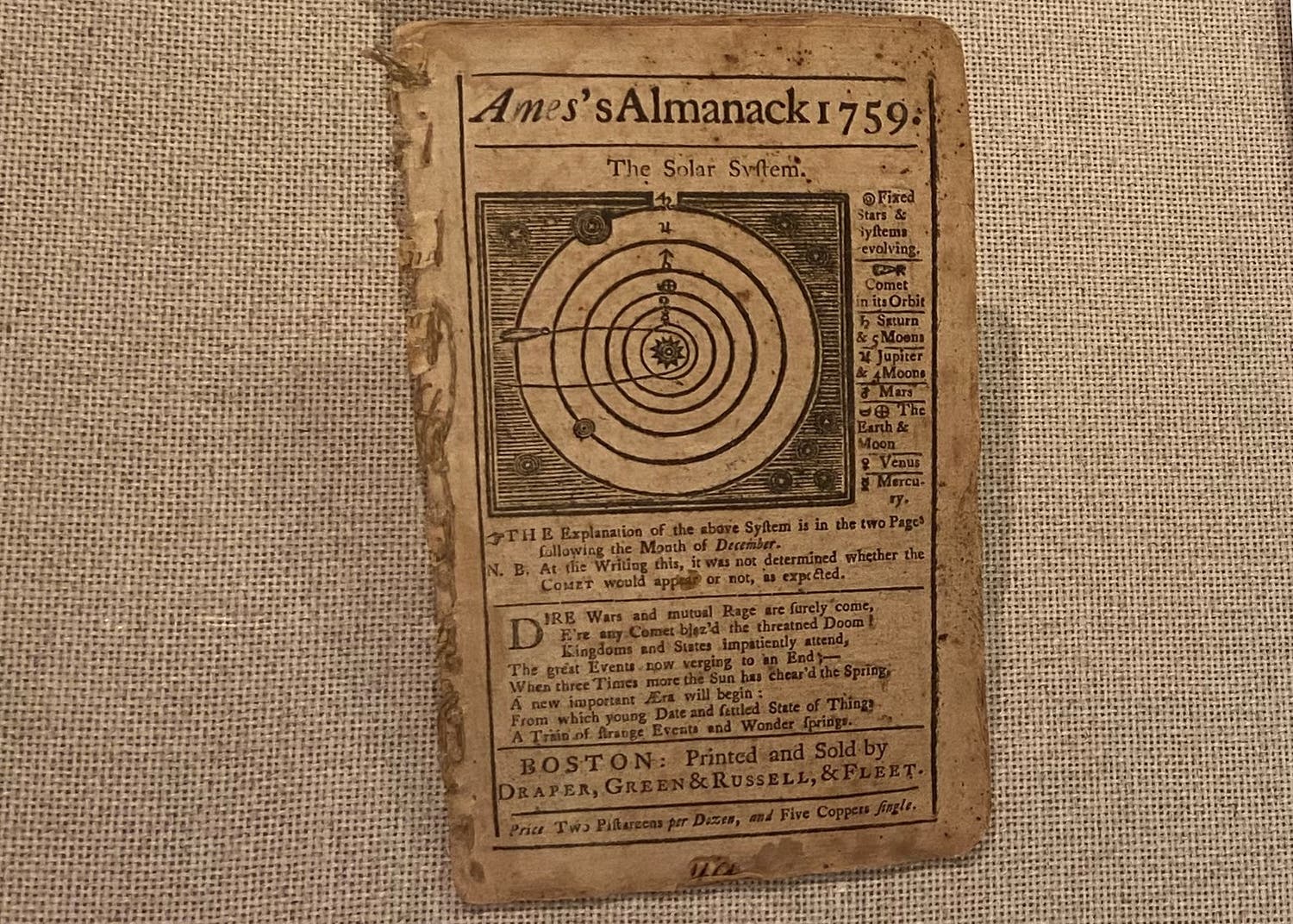
Ames’ Almanack. Boston, 1759.
Beginning in the mid-1720s, Nathaniel Ames published a series of yearly almanacs popular among those living in the New England colonies. Ames' Almanack was both similar and different to the more popular Poor Richard's in that it disseminated useful knowledge both astronomical and astrological. It also contained poetry as a text filler, but lacked the advertisements and aphorisms in Poor Richard's.
The Library's copy has crude contemporary stab sewing to hold the three signatures together. Additional stab holes demonstrate it was likely once bound with other pamphlets or almanacks, which helps account for its survival.
Thomas' Massachusetts, Connecticut, Rhode-Island, Newhampshire & Vermont almanack
Worcester, 1797
Gift of Elinor Eisemann
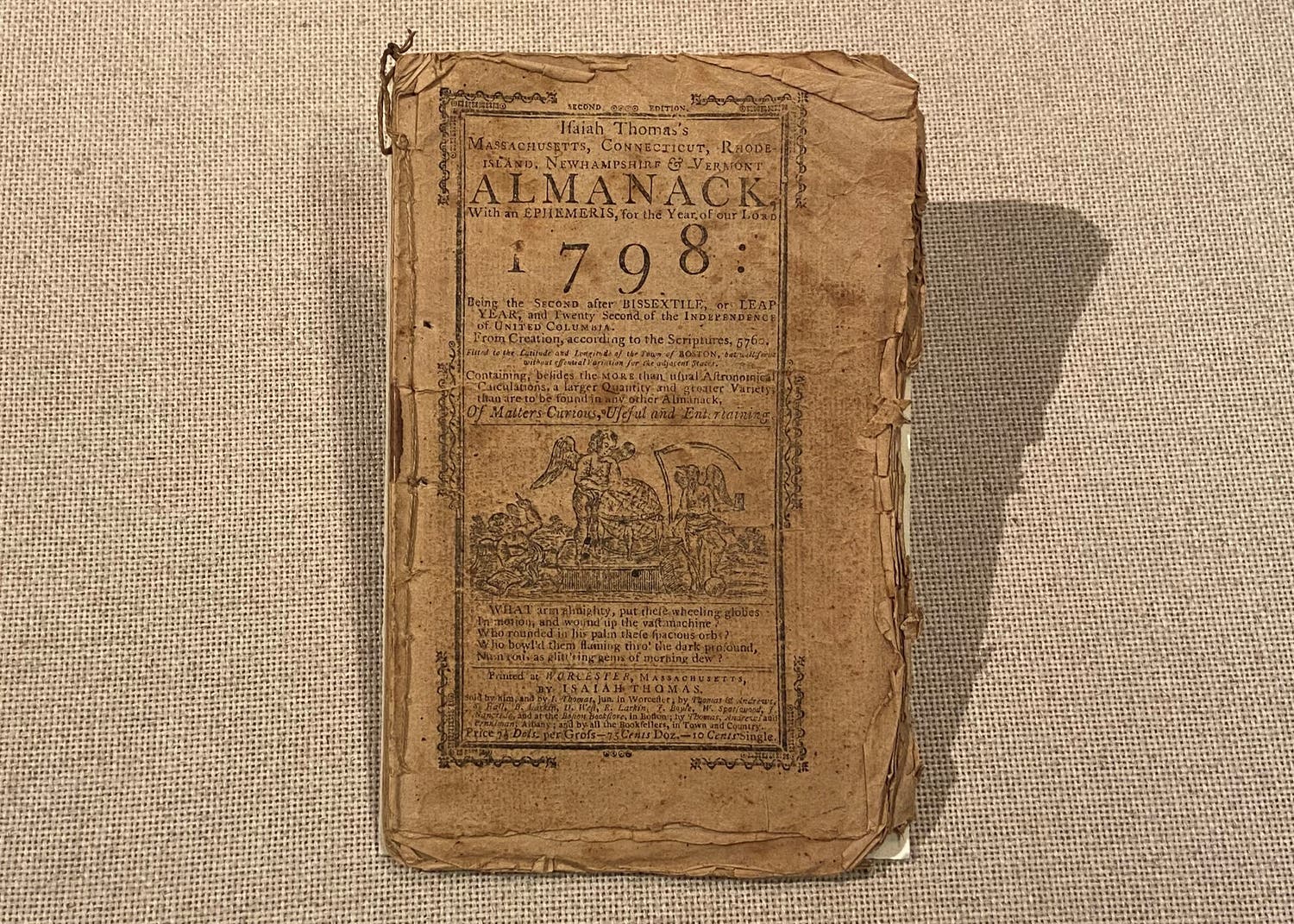
Thomas’ Massachusetts, Connecticut, Rhode-Island, Newhampshire & Vermont almanack. Worcester, 1797.
Isaiah Thomas founded the American Antiquarian Society, and was a member of the American Philosophical Society. He was among the most important printers in the early United States, and printed his almanac from 1775 until 1803. It followed much the same format as Poor Richard's and Ames' in its printing of astronomical data, notes on tides, and other items of useful knowledge. Unlike the other two almanacs on display, it also included currency exchange tables, a three page table to calculate distances between cities, and other news items of interest to the reader.
Printing his almanac in Worcester, in central Massachusetts, was a testament to Thomas' deep involvement in the American Revolution. His newspaper, the Spy, was highly political and supportive of anti-colonial groups. As such, after the battles of Lexington and Concord, Thomas had to move his press from Boston to Worcester to prevent his own arrest and that of his printers, and to prevent the presses from being seized and destroyed by the British.
The Linda Hall Library holds one of the best collections of rare printed science, technology, and engineering works in the world. This exhibition will be on display until July 14th, 2023. The Library is open to the public free of charge during regular Library hours, Monday - Friday, 10:00 AM - 5:00 PM.

